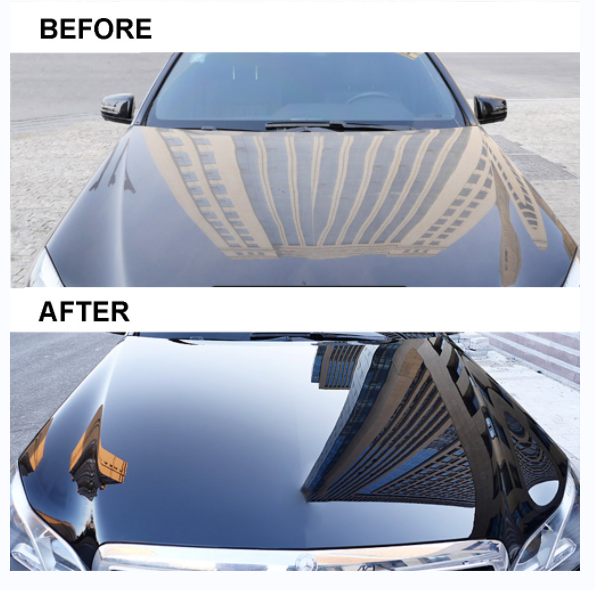Get high-quality ceramic coating Sarasota to safeguard your car’s paint.
Get high-quality ceramic coating Sarasota to safeguard your car’s paint.
Blog Article
A Comprehensive Guide to the Kinds Of Ceramic Coating on the marketplace
Ceramic layers have arised as an essential option throughout different sectors because of their one-of-a-kind homes and applications. From silica-based formulations understood for their robustness to crossbreed alternatives that combine several benefits, the selections readily available can be frustrating. Comprehending the subtleties of each type, including their certain benefits and optimal use instances, is vital for making educated decisions. As we explore the distinct attributes and applications of these coverings, the ramifications for efficiency and durability come to be increasingly evident, questioning regarding which kind could best suit your requirements.
Understanding Ceramic Coatings
Ceramic layers are advanced protective services that have gotten popularity in various markets, specifically in auto and aerospace applications. These coatings include a fluid polymer that, when cured, forms a resilient, hydrophobic layer on the surface of the substrate. This layer gives improved resistance to environmental impurities, UV radiation, and chemical exposure, thus expanding the life and aesthetic allure of the underlying product.
The basic element of ceramic coverings is silica, which adds to their hardness and toughness. The application procedure usually involves surface area prep work, application of the covering, and curing, which can be achieved through warmth or UV light. When treated, ceramic layers display outstanding bonding homes, allowing them to stick highly to a range of surface areas, consisting of metals, plastics, and glass.
In enhancement to their safety features, ceramic coatings likewise provide ease of maintenance. Their hydrophobic nature lowers the adherence of dirt and crud, making cleaning less complex and much less regular. Generally, the fostering of ceramic finishes represents a substantial innovation in surface area protection innovation, supplying both practical and visual benefits throughout several fields.
Kinds Of Ceramic Coatings
Various kinds of ceramic coatings are offered, each made to meet specific efficiency needs and applications - scratch repair sarasota. One of the most typical types consist of:
Silica-based Coatings: These coverings mostly contain silicon dioxide and are understood for their resilience and chemical resistance. They are commonly made use of in automotive and industrial applications.
Titanium Dioxide Coatings: Popular for their photocatalytic properties, titanium dioxide coatings are frequently used in atmospheres where self-cleaning and antifungal residential properties are desirable, such as in building materials and auto finishes.
Zirconia Coatings: Characterized by their high-temperature security and thermal resistance, zirconia layers are made use of in applications such as wind turbine engines and high-performance auto parts.
Alumina Coatings: Showing superb solidity and thermal stability, alumina coatings are often used in wear-resistant applications, including cutting tools and industrial equipment. - scratch repair sarasota
Hybrid Coatings: Incorporating the homes of various products, crossbreed finishings provide enhanced efficiency qualities, making them appropriate for unique and requiring applications.
Each sort of ceramic finish offers distinctive functions, allowing individuals to select one of the most appropriate remedy based on specific ecological conditions and efficiency demands.
Benefits of Ceramic Coatings
Ceramic coatings, in specific, deal various benefits that make them progressively preferred among suppliers and customers alike. These finishings are immune to scrapes, chemicals, and UV rays, ensuring that the underlying surface remains secured over time.
Along with resilience, ceramic layers offer superb hydrophobic properties, permitting easy cleaning and upkeep. This water-repellent nature decreases other the adherence of dust, grime, and various other click here to find out more contaminants, which can extend the visual allure and capability of the surface area. Ceramic coatings can considerably improve thermal resistance, making them perfect for applications that endure high temperature levels.

Application Process
When applying ceramic coverings, a careful method is important to attain optimal outcomes. The application process commonly begins with complete surface area prep work. This involves cleaning, sanitizing, and brightening the surface area to remove all impurities, including dust, grease, and prior waxes or sealers. A clean surface area ensures correct bond of the coating.
As soon as the surface is prepped, the next step is to apply the ceramic coating. This can be done using an applicator pad or a microfiber cloth, making sure even coverage. It is crucial try this out to operate in small sections to keep control and stop early curing. The finish should be used in slim layers, as thicker applications can cause unequal coatings.
After application, the finishing needs a certain curing time, normally ranging from a few hours to a full day, depending upon the item. Throughout this time around, it is vital to prevent direct exposure to dampness or contaminants. A mild buffing may be required after curing to boost the gloss and remove any type of high areas. Complying with these steps vigilantly will make best use of the effectiveness and durability of the ceramic finishing, providing a durable protective layer for the surface.
Upkeep and Long Life
To guarantee the longevity and effectiveness of a ceramic finishing, routine upkeep is essential. Ceramic finishes, recognized for their resilience and safety high qualities, need specific treatment regimens to maximize their life expectancy and efficiency.
Along with routine cleaning, periodic assessments are vital. Search for indicators of wear or damages, such as hydrophobic homes lessening or surface blemishes. If necessary, a light polish may be used to invigorate the coating without stripping it away.
In addition, the application of a booster spray can boost the covering's hydrophobic impacts and restore its gloss. This is specifically advantageous for finishings that have actually been in usage for a prolonged duration. Inevitably, by adhering to these maintenance methods, one can significantly expand the life of a ceramic layer, guaranteeing that it continues to offer optimum defense against environmental elements and preserve the aesthetic allure of the car.
Conclusion

Report this page